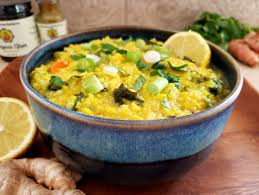
So what is Kitchari exactly?
Kitchari is a traditional Indian dish with the main ingredients of mung dal and basmati rice that has been used in Ayurveda for thousands of years. Mung dal is the green mung bean, sliced in half with the outer green skin removed, leaving a small yellow lentil. The process of this allows the bean to cook into a mushy state, making it much easier to digest. Since this is one of the main health benefits of Kitchari, mung dal is often preferred over the whole mung bean when making Kitchari.
Kitchari is a traditional Indian dish with the main ingredients of mung dal and basmati rice that has been used in Ayurveda for thousands of years. Mung dal is the green mung bean, sliced in half with the outer green skin removed, leaving a small yellow lentil. The process of this allows the bean to cook into a mushy state, making it much easier to digest. Since this is one of the main health benefits of Kitchari, mung dal is often preferred over the whole mung bean when making Kitchari.
Why is Kitchari a staple in Ayurveda?
Kitchari is considered an Ayurvedic staple for several reasons. As mentioned above, the mushy state of the dal and basmati rice allows for easy digestion, even by many individuals that have a hard time digesting other beans. When eating meals such as this, the digestive fire (Agni) can reduce its work load and “take a break”. This (often much needed) break allows the digestion to strengthen and toxins to be flushed from the system.
Kitchari is considered an Ayurvedic staple for several reasons. As mentioned above, the mushy state of the dal and basmati rice allows for easy digestion, even by many individuals that have a hard time digesting other beans. When eating meals such as this, the digestive fire (Agni) can reduce its work load and “take a break”. This (often much needed) break allows the digestion to strengthen and toxins to be flushed from the system.
Kitchari is also considered a “perfect protein” source, meaning it contains the nine essential amino acids that are needed in the body. However, Kitchari’s nutrient value goes much farther than protein. This hearty meal is a great source of numerous essential vitamins and minerals such as iron, calcium, manganese, phosphorus, potassium, magnesium, folate, copper, zinc and various B vitamins. It is a great source of dietary fiber and contains a large amount of anti-aging, cancer-fighting antioxidants. Due to the high nutrition content of Kitchari, it is considered a healthy, nourishing, sustainable meal option to eat on a regular basis (I personally eat Kitchari at least once a week!).
Between these two essential factors, Kitchari is considered a great meal choice for the daily diet, but even more so during times of cold, flu, illness, digestive disorders, pregnancy and postpartum. It is the single food taken during most Ayurvedic mono-diet cleanses such as Panchakarma Therapy. Unlike many other cleanses and fasts, the regular intake of Kitchari allows the body to flush out the toxins while simultaneously providing enough nutrients to avoid extreme weakness and depletion.
Finally, Kitchari possesses an unlimited amount of variations to fit your personal needs. Although traditionally Kitchari is created from solely mung dal and basmati rice, many individuals choose to switch up the ingredients for health purposes, doshic needs, seasonal influence or simply taste preferences. I have several Kitchari variation recipes in the recipe section of my blog.
Health Benefits of Kitchari
- Tri-doshic, meaning it is beneficial for all dosha types (aka Ayurvedic body-types)
- Easy to digest
- Strengthens the digestive fire and flushes toxins when eaten regularly
- Due to the easy-to-digest quality, this is the most recommended meal during sickness, chronic illness, weakness, digestive issues, pregnancy, postpartum and detoxification
- Perfect protein source (contains all 9 essential amino acids)
- High in multiple nutrients such as iron, calcium, potassium, magnesium, folate, copper, zinc and various B vitamins
- Great source of dietary fiber
- High in cancer-fighting, anti-aging antioxidants
- Nutrient dense, making it a healthy, sustainable routine meal option
- Improves heart and colon health
- Spices involved provide numerous health benefits such as reducing inflammation, flushing toxins, increasing circulation, boosting immunity, increasing the digestion and allowing better absorption of nutrients
- Great meal option for weight loss programs (especially Kapha-reducing variations)
- Wide variety of recipe options to adhere to the individual’s healthcare needs
When is the best time to eat Kitchari?
Kitchari is very versatile and can basically be eaten at any time. Kitchari is for suitable daily intake, as it is healthy, nourishing, energizing, great for the digestion, an excellent protein source and has many recipe variations to adhere to your current needs on any given day. Whether you choose to make Kitchari a routine staple in your diet or not, it should at least be a mandatory part of your treatment during times of sickness (fever, flu, cold, etc), chronic illness, digestive disorder, cleansing, pregnancy, and postpartum.
Kitchari is very versatile and can basically be eaten at any time. Kitchari is for suitable daily intake, as it is healthy, nourishing, energizing, great for the digestion, an excellent protein source and has many recipe variations to adhere to your current needs on any given day. Whether you choose to make Kitchari a routine staple in your diet or not, it should at least be a mandatory part of your treatment during times of sickness (fever, flu, cold, etc), chronic illness, digestive disorder, cleansing, pregnancy, and postpartum.
This is because during all of these stages of life the digestive fire becomes very weak and therefore only simple foods should be taken. But as mentioned above, Kitchari will not only give the digestion a rest due to its ability to breakdown and assimilate easily in the system, it will provide you with plenty of essential vitamins and nutrients that will strengthen, nourish and rejuvenate the body during these crucial times.
How do you make Kitchari?
Kitchari is very simple to make. It generally requires the addition of the water, beans, rice, spices, oil and vegetables into one pan and cooked on a low simmer for long enough to make a mushy stew or soup of sorts. The cooking process generally will take about 30-45 minutes total.
Kitchari is very simple to make. It generally requires the addition of the water, beans, rice, spices, oil and vegetables into one pan and cooked on a low simmer for long enough to make a mushy stew or soup of sorts. The cooking process generally will take about 30-45 minutes total.
There are several Kitchari recipe variations and therefore you can pick and choose the ones that will best suit your needs on any given day. Some may be a bit more involved and others will be easier depending on the ingredients and the chosen method for cooking. No matter what the recipe, Kitchari is fairly easy to make. Although the traditional Kitchari is made with mung dal and basmati rice, often you can use replacements such as using red lentils or whole mung beans rather than the mung dal. Generally Kapha types have issues with metabolizing refined grains and therefore may choose to use quinoa or millet in placement of the basmati rice.
During cleanses it is often recommended to avoid adding in veggies, keeping the recipe as simple as can be and using strictly the mung dal, basmati rice, digestive spices and lots of ghee. However, if this your first time cleansing or you need more substance than rice and dahl, a wide variety of vegetables can be used to make it more interesting, adjusting the selection to the season and your current healthcare needs (i.e. beets, carrots, kale and dandelion greens for liver support).
Following are instructions on making kitchari according to how I learned to make it for my Pancha Karma (cleanse program) clients:
Tips: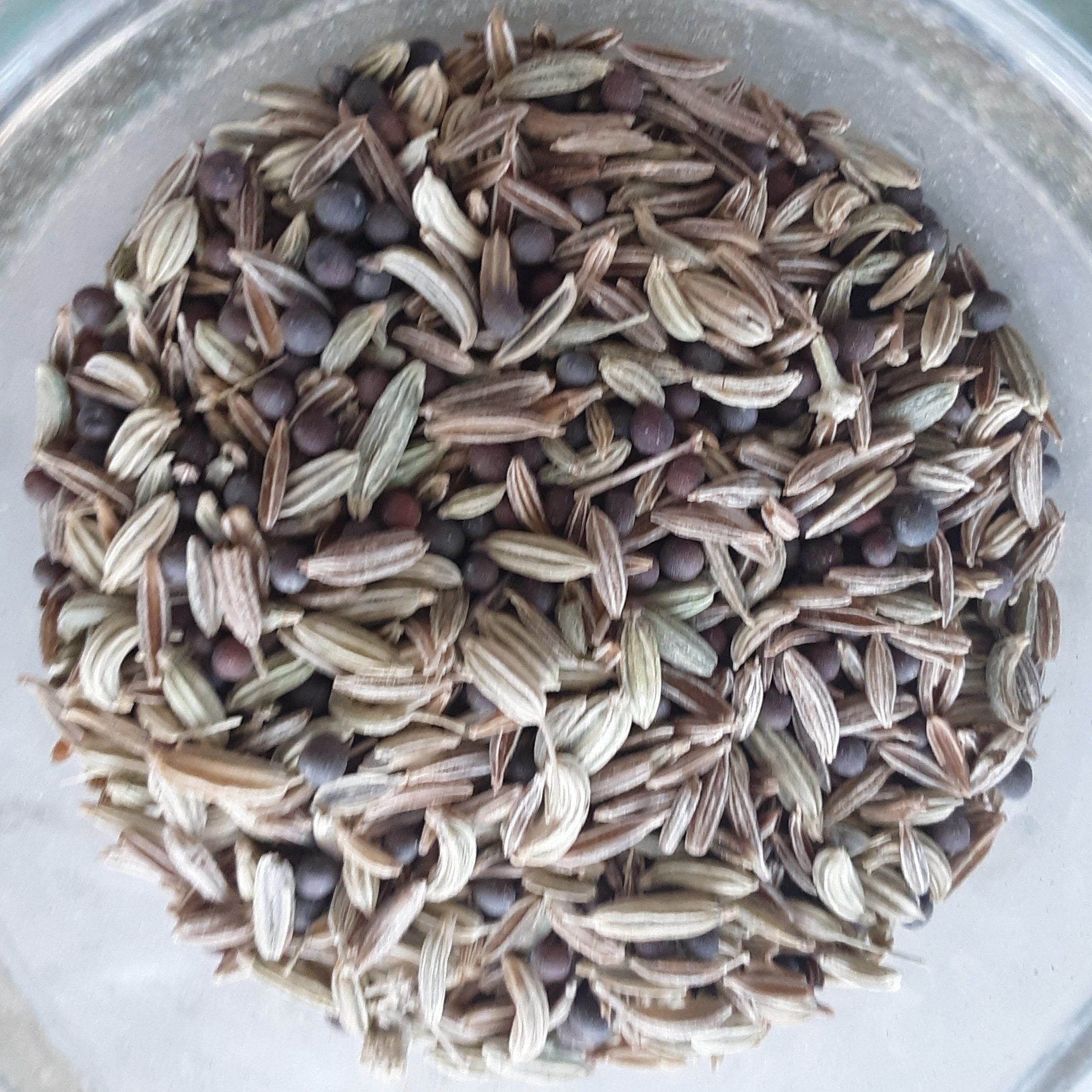

1. I combine 1 part of each seed: cumin, fennel, & black mustard, in a spice jar so Im not having to measure out each one individually. Plus I use this seed mix for broths and other soups.
2. I prepare a batch of fresh ginger and garlic by blending it together in a food processor. It can be kept in the fridge up to a week and saves on prep time.
3. I recommend not chopping your veggies too far ahead of time. I do it fresh for every meal. It is more work but what I learned is that as soon as metal cuts through the vegetable, it starts to oxidize and lose it's vitality and nutrition. (See my article on 12 ways to make your meals more amazing)
4. Always soak your legumes. I even soak my rice or quinoa with the legumes personally. Atleast overnight if not longer.
5. I add salt towards the end so as not to hinder the legumes from cooking.
6. If you cannot get yellow mung dal, red lentils would be the next best thing.
7. If you are not using ghee, coconut/sesame/sunflower oil would be the next best options.
2. I prepare a batch of fresh ginger and garlic by blending it together in a food processor. It can be kept in the fridge up to a week and saves on prep time.
3. I recommend not chopping your veggies too far ahead of time. I do it fresh for every meal. It is more work but what I learned is that as soon as metal cuts through the vegetable, it starts to oxidize and lose it's vitality and nutrition. (See my article on 12 ways to make your meals more amazing)
4. Always soak your legumes. I even soak my rice or quinoa with the legumes personally. Atleast overnight if not longer.
5. I add salt towards the end so as not to hinder the legumes from cooking.
6. If you cannot get yellow mung dal, red lentils would be the next best thing.
7. If you are not using ghee, coconut/sesame/sunflower oil would be the next best options.
Working from your recipe:
1. Begin to heat water
2. In a separate, thick bottom pot, add the ghee and spice seeds (black mustard, cumin, & fennel seeds).
3. Turn the heat on to med-hi
4. When the ghee heats up the seeds will begin to pop! This releases the flavor and prana of the seeds. (This happens fast so if you aren't ready with the other ingredients, take it off the heat so the seeds don't burn)
5. While the ghee is heating, strain and rinse your grains
6. When the seeds begin to pop, add your strained beans & grains, and measured Kitchari Spice Churna, and lightly 'toast' them with the ghee and seeds, about 30 seconds. (This also increases the digestibility of the grains)
2. In a separate, thick bottom pot, add the ghee and spice seeds (black mustard, cumin, & fennel seeds).
3. Turn the heat on to med-hi
4. When the ghee heats up the seeds will begin to pop! This releases the flavor and prana of the seeds. (This happens fast so if you aren't ready with the other ingredients, take it off the heat so the seeds don't burn)
5. While the ghee is heating, strain and rinse your grains
6. When the seeds begin to pop, add your strained beans & grains, and measured Kitchari Spice Churna, and lightly 'toast' them with the ghee and seeds, about 30 seconds. (This also increases the digestibility of the grains)
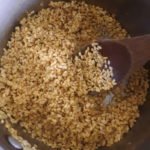 7. Add the heated water and bring to a high simmer
7. Add the heated water and bring to a high simmer8. Add your onions, ginger, & garlic if it is in your recipe (If you combined your ginger & garlic just add a spoonful to your onions)
9. Bring to a medium simmer and cover, yet remember to stir often. Every heat molecule needs to be distributed evenly to cook thoroughly.
10. Begin to prepare all the vegetables you would like to put in your Kitchari.
11. After about 20 minutes (if it looks like the grains are almost done) add the harder veggies (i.e. green beans, carrots, cauliflower). Continue to stir every few minutes

12. After about 30 Minutes of cooking I will add the softer vegetables like zucchini and greens, and turn heat to lowest setting. At this point adding salt and any additional flavor per your preference. Continue to stir as needed
13. After about 35-40 Minutes your Kitchari should be done
14. Garnish with fresh chopped Cilantro
Consider eating kitchari atleast one day a week, to give your body a mini cleanse and digestive reset. If you have any more questions about Ayurvedic cooking, cleanses, or anything else please reach out! Happy cooking :)

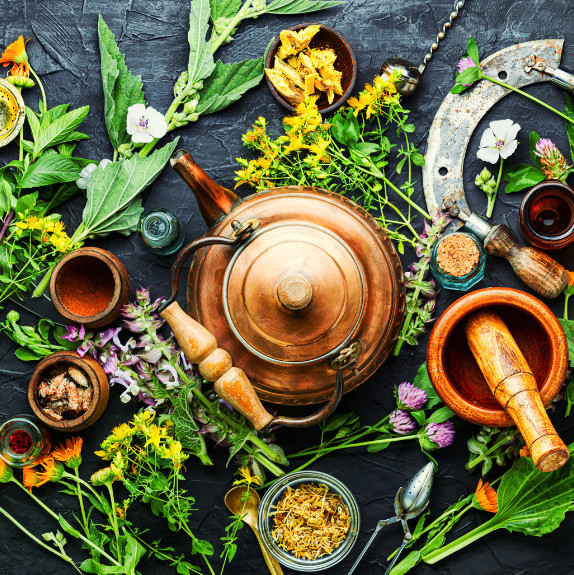
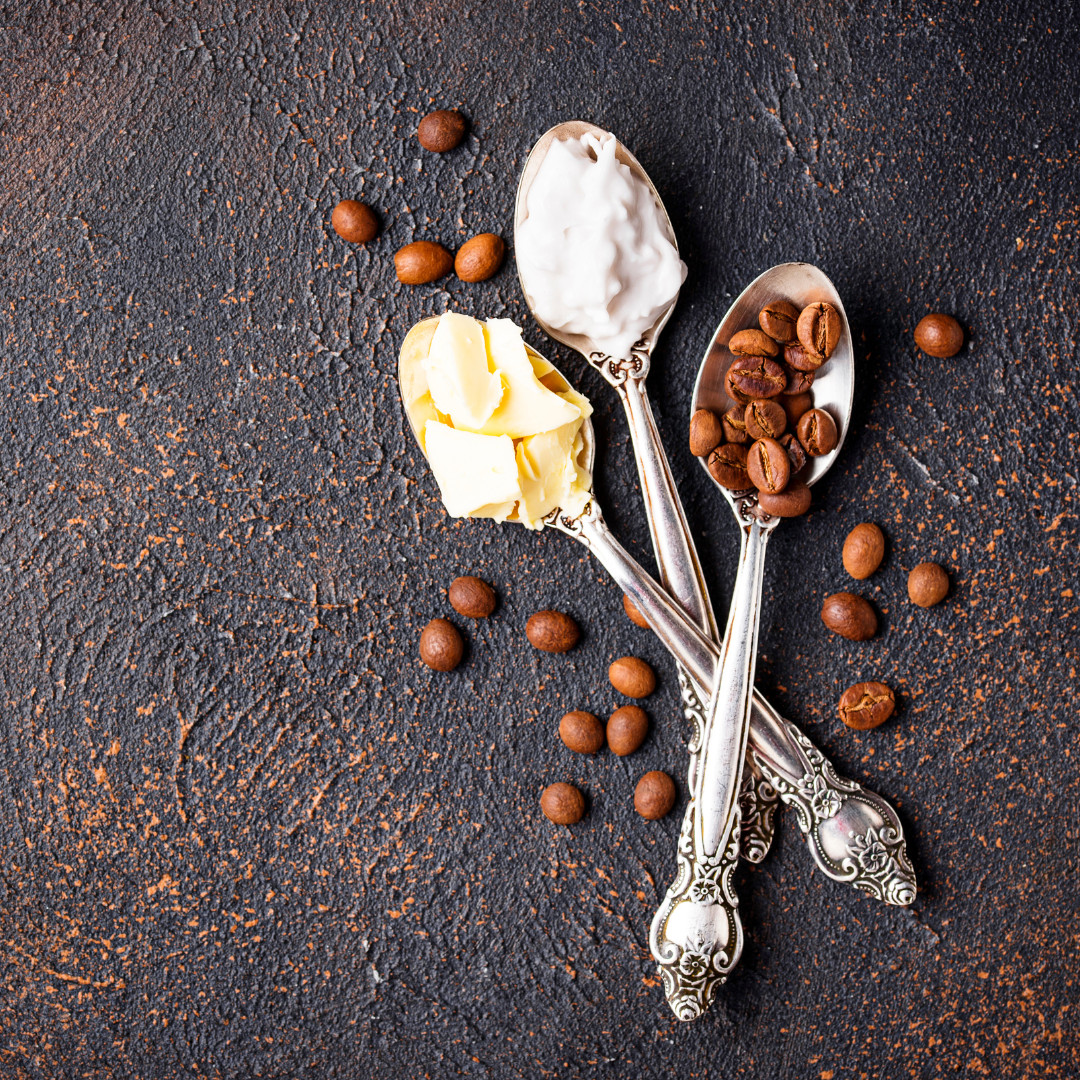
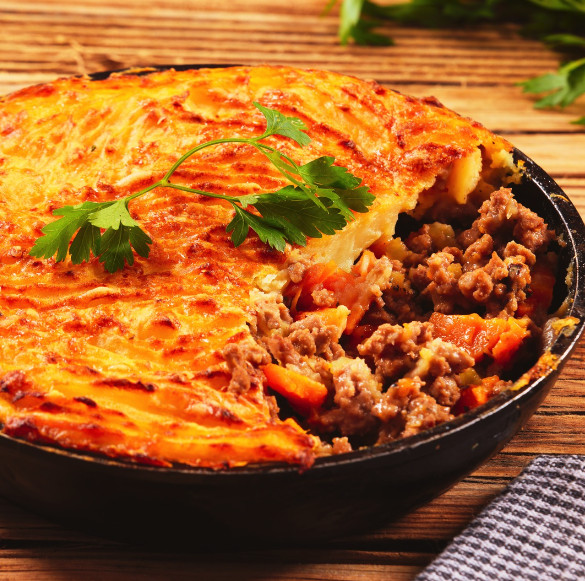




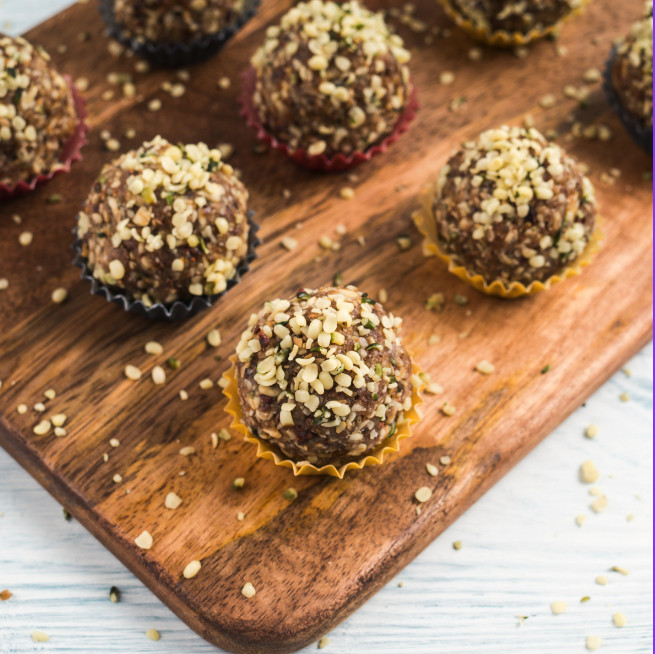







0 Comments